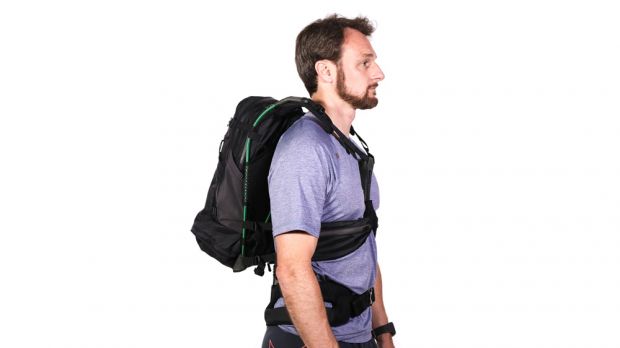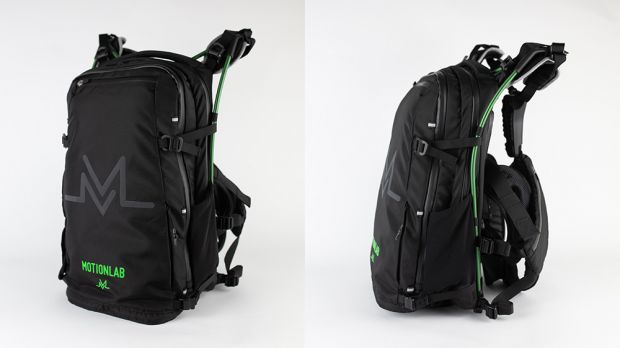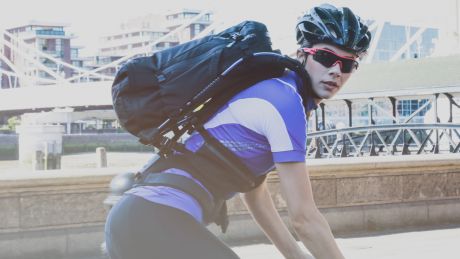You can trust Coach
If you cycle or run to work, your rucksack has to be perfect. It has to be able to carry everything you need for a day in the office without being heavy or uncomfortable, and it absolutely can’t bounce around while you’re on the move.
There are lots of great active commuter backpacks, but Motionlab claimed to have made something entirely new that was a cut above the competition. However, after several weeks of testing the rucksack for both running and cycling, I was disappointed. It’s certainly novel and a good option for cyclists, but I didn’t find it any more comfortable for running than more traditional backpacks. Since the Motionlab Active Commute is very expensive and often impractical in everyday life, it’s hard to recommend it over other options.
The Motionlab backpack is designed to take the weight off your shoulders and transfer it to your hips through a large waist strap. The rucksack itself sits away from your back, also removing the common problem of having an excessively sweaty back after an active commute.
It takes some setting up at first, with a long spine on the backpack that needs to be adjusted to fit your torso. Then you need to tighten the hip strap – and you have to really tighten it for the system to work – and do up the chest buckle. It’s a fairly complicated process but one you need to get right, which is why there’s a 13-minute video on Motionlab’s website walking you through it.

Once I was all set up, I started out on a run. I was coming home from the office and had loaded the bag to the brim – the capacity is impressive, more than enough for a laptop and full change of clothes.
This first run was an absolute nightmare. I thought I’d set up the bag correctly, and tinkered with it on the move, but the whole experience was highly uncomfortable. The waist belt was unpleasantly tight, but that was nothing compared to the chest buckle, which delivered a savage amount of pressure to my sternum, or the left shoulder strap, which ripped some skin off during the run.
As a result of the pain in my chest and shoulder I couldn’t use the bag again for a few days, and was pretty apprehensive about doing so in any case. However, once I cut down the amount I carried in it substantially – still enough for a day in the office, but the kind of bare-bones packing I’d do with other commuter bags – and spent some more time adjusting the straps, especially tightening the shoulder ones, it was more comfortable to run with. It didn’t rip any more skin off, at least.
However, the backpack did still deliver an unwelcome amount of pressure to the sternum during runs, and the waist belt has to be done up uncomfortably tight for it to sit right. The hard chest buckle in particular could use a complete redesign in my opinion, because as soon as there’s a decent amount of weight in the bag it digs into your chest.
For runs of up to about half an hour the Motionlab rucksack was fine, but it wasn’t better than the best standard commuter running bags I’ve tried, like the Lululemon Surge II or dhb Slice. Given that the Motionlab rucksack is £189, I’d recommend runners pick something cheaper.
See related
- The Best Running Backpacks For Long Runs Or Commuting
- Tips And Kit Essentials To Help You Start Running To Work
- The Best Cycling Backpacks For Commuters

It did impress me more when cycling, particularly because the design seemed to stop me getting the usual neckaches when riding with a heavy backpack. It’s still a bit of a faff to use but I’d say it’s a more worthwhile option for cyclists, where the design delivers the benefit of removing the weight from your shoulders without feeling so uncomfortable around the waist and chest.
However, the other problem I have with the bag affects both runners and cyclists, which is that it’s a pain to use in everyday life. When you need to stop off to grab something from the shops or retrieve something from the bag, you have to undo all the straps and get the waist belt into a position where it doesn’t tip the rucksack over while you open it up. The way the shoulder straps work also means you can’t sling the bag over one shoulder and walk around – if it’s not done up correctly it hangs off your back very loosely and there are straps swinging all over the place.
All this could be forgiven it you were getting a truly revolutionary experience when running and cycling with the bag, but I found that just wasn’t the case. I tried adjusting the bag constantly to get a more comfortable fit when running, but the absolute best position I achieved was just OK and certainly no more comfortable than the standard running rucksacks I use regularly for commuting.
We let Motionlab know about our experience and in response the company said that it does take time to set up for each person’s individual body and movement. It also says it has improved the fitting guide and encourages people with a pack to contact the company for help with fittings.
There might be something to Motionlab’s system, perhaps more for cyclists than runners, but I have to report that the Active Commute rucksack left me disappointed.
Buy from Motionlab | £189

Nick Harris-Fry is a journalist who has been covering health and fitness since 2015. Nick is an avid runner, covering 70-110km a week, which gives him ample opportunity to test a wide range of running shoes and running gear. He is also the chief tester for fitness trackers and running watches, treadmills and exercise bikes, and workout headphones.

